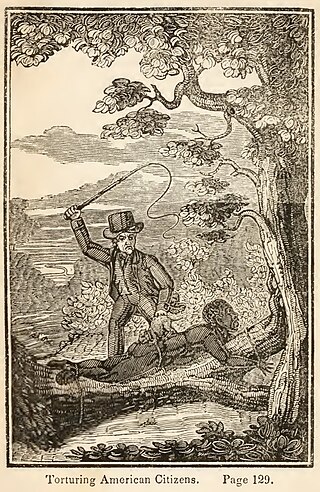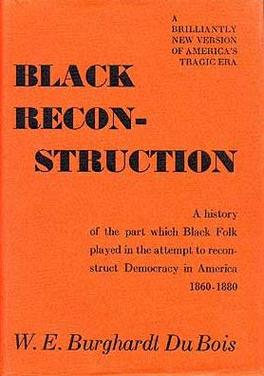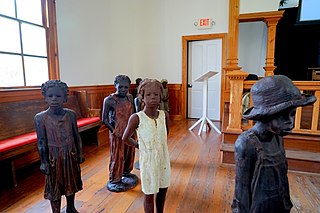
The Atlantic slave trade or transatlantic slave trade involved the transportation by slave traders of enslaved African people, mainly to the Americas. The outfitted European slave ships of the slave trade regularly used the triangular trade route and its Middle Passage, and existed from the 16th to the 19th centuries. The vast majority of those who were transported in the transatlantic slave trade were from Central and West Africa who had been sold by West African slave traders to European slave traders, while others had been captured directly by the slave traders in coastal raids; European slave traders gathered and imprisoned the enslaved at forts on the African coast and then brought them to the Americas. Except for the Portuguese, European slave traders generally did not participate in the raids because life expectancy for Europeans in sub-Saharan Africa was less than one year during the period of the slave trade. Portuguese coastal raiders found that slave raiding was too costly and often ineffective and opted for established commercial relations.

The legal institution of human chattel slavery, comprising the enslavement primarily of Africans and African Americans, was prevalent in the United States of America from its founding in 1776 until 1865, predominantly in the South. Slavery was established throughout European colonization in the Americas. From 1526, during the early colonial period, it was practiced in what became Britain's colonies, including the Thirteen Colonies that formed the United States. Under the law, an enslaved person was treated as property that could be bought, sold, or given away. Slavery lasted in about half of U.S. states until abolition in 1865, and issues concerning slavery seeped into every aspect of national politics, economics, and social custom. In the decades after the end of Reconstruction in 1877, many of slavery's economic and social functions were continued through segregation, sharecropping, and convict leasing.

Stanley Maurice Elkins was an American historian, best known for his unique and controversial comparison of slavery in the United States to Nazi concentration camps, and for his collaborations with Eric McKitrick regarding the early American Republic. They together wrote The Age of Federalism, on the history of the founding fathers of America. He obtained his BA from Harvard University and his Ph.D. in history from Columbia University. Elkins first taught at the University of Chicago but spent most of his career as a professor of history at Smith College in Northampton, MA, where he raised his family and eventually retired.
Eugene Dominic Genovese was an American historian of the American South and American slavery. He was noted for bringing a Marxist perspective to the study of power, class and relations between planters and slaves in the South. His book Roll, Jordan, Roll: The World the Slaves Made won the Bancroft Prize. He later abandoned the left and Marxism and embraced traditionalist conservatism. He wrote during the Cold War and his political beliefs were viewed by some as highly controversial at the time.

Black Reconstruction in America: An Essay Toward a History of the Part Which Black Folk Played in the Attempt to Reconstruct Democracy in America, 1860–1880 is a history of the Reconstruction era by W. E. B. Du Bois, first published in 1935. The book challenged the standard academic view of Reconstruction at the time, the Dunning School, which contended that the period was a failure and downplayed the contributions of African Americans. Du Bois instead emphasized the agency of Black people and freed slaves during the Civil War and Reconstruction and framed the period as one that held promise for a worker-ruled democracy to replace a slavery-based plantation economy.

The internal slave trade in the United States, also known as the domestic slave trade, the Second Middle Passage and the interregional slave trade, was the mercantile trade of enslaved people within the United States. It was most significant after 1808, when the importation of slaves from Africa was prohibited by federal law. Historians estimate that upwards of one million slaves were forcibly relocated from the Upper South, places like Maryland, Virginia, Kentucky, North Carolina, Tennessee, and Missouri, to the territories and then-new states of the Deep South, especially Georgia, Alabama, Louisiana, Mississippi, and Arkansas.

Anthony Johnson was an Angolan-born man who achieved wealth in the early 17th-century Colony of Virginia. Held as an indentured servant in 1621, he earned his freedom after several years and was granted land by the colony.

The institution of slavery in North America existed from the earliest years of the colonial history of the United States until 1865 when the Thirteenth Amendment abolished slavery throughout the United States except as punishment for a crime. It was also abolished among the sovereign Indian tribes in Indian Territory by new peace treaties which the US required after the Civil War.

The history of slavery in Kentucky dates from the earliest permanent European settlements in the state, until the end of the Civil War. In 1830, enslaved African Americans represented 24 percent of Kentucky's population, a share that had declined to 19.5 percent by 1860, on the eve of the Civil War. Most enslaved people were concentrated in the cities of Louisville and Lexington and in the hemp- and tobacco-producing Bluegrass Region and Jackson Purchase. Other enslaved people lived in the Ohio River counties, where they were most often used in skilled trades or as house servants. Relatively few people were held in slavery in the mountainous regions of eastern and southeastern Kentucky; they served primarily as artisans and service workers in towns.

Slavery in Britain existed before the Roman occupation and until the 11th century, when the Norman conquest of England resulted in the gradual merger of the pre-conquest institution of slavery into serfdom, and all slaves were no longer recognised separately in English law or custom. By the middle of the 12th century, the institution of slavery as it had existed prior to the Norman conquest had fully disappeared, but other forms of unfree servitude continued for some centuries.

Sven Beckert is Laird Bell Professor of American History at Harvard University, where he teaches the history of the United States in the nineteenth century, and global history. With Christine A. Desan, he is the co-director of the Program on the Study of Capitalism at Harvard University.

Slave breeding was the practice in slave states of the United States of white enslavers to systematically force the reproduction of enslaved people to increase their wealth. It included coerced sexual relations between enslaved men and women or girls, forced pregnancies of enslaved women and girls, and favoring enslaved females who could produce a relatively large number of children. The objective was for enslavers to increase the number of people they enslaved without incurring the cost of purchase, and to fill labor shortages caused by the abolition of the Atlantic slave trade.

The treatment of slaves in the United States often included sexual abuse and rape, the denial of education, and punishments like whippings. Families were often split up by the sale of one or more members, usually never to see or hear of each other again.

The Cotton Plantation Record and Account Book is a best-selling and pioneering guide to farm accounting in the antebellum cotton-producing regions of the United States. It was first published in 1847 or 1848 by Thomas Affleck (1812–1868), a Scottish immigrant and owner of the Glenblythe Plantation in Gay Hill, Washington County, Texas. The book contains a detailed system, including blank tables to be filled in, that allowed plantation owners to track the efficiency of their production. It also includes essays on various aspects of plantation management, such as the proper care and discipline of slaves.

Following Robert Cavelier de La Salle establishing the French claim to the territory and the introduction of the name Louisiana, the first settlements in the southernmost portion of Louisiana were developed at present-day Biloxi (1699), Mobile (1702), Natchitoches (1714), and New Orleans (1718). Slavery was then established by European colonists.

The history of slavery in Mississippi began when the region was still Mississippi Territory and continued until abolition in 1865. The U.S. state of Mississippi had one of the largest populations of enslaved people in the Confederacy, third behind Virginia and Georgia. There were very few free people of color in Mississippi the year before the American Civil War: the ratio was one freedman for every 575 slaves.
Joshua Daniel Rothman is an American historian. He is a professor and chair for the department of history at the University of Alabama.

This is a glossary of American slavery, terminology specific to the cultural, economic, and political history of slavery in the United States
Slave life in Georgia: a narrative of the life, sufferings, and escape of John Brown, a fugitive slave, now in England is an 1855 American fugitive slave narrative written by John Brown with the editorial assistance of a British anti-slavery society and published in England. Published in the wake of Harriet Beecher Stowe's abolitionist blockbusters Uncle Tom's Cabin and A Key to Uncle Tom's Cabin, Brown states "Mrs. Stowe has told something about Slavery. I think she must know a great deal more than she has told. I know more than I dare to tell." Indeed, when describing the prison of slave trader Theophilus Freeman, Brown stops short of explicitly describing the sexual abuses that took place therein: "...the youngest and handsomest females were set apart as the concubines of the masters, who generally changed mistresses every week. I could relate, in connection with this part of my subject, some terrible things I know of, that happened, and lay bare some most frightful scenes of immorality and vice which I witnessed; but I abstain, for reasons which my readers will, I hope, appreciate. I think it only right, however, to mention the above fact, that people may get a glimpse of the dreadful fate which awaits the young slave women who are sold away South, where the slave-pen is only another name for brothel." According to historian Walter Johnson, the explanations of cotton agriculture written by John Brown, Charles Ball, Louis Hughes, and Solomon Northrup were superior to anything published in American Cotton Planter magazine.
John Hagan was a well-known American interstate slave trader who operated slave jails in both Charleston and New Orleans, as well as maintaining strong business and personal ties to the Richmond slave markets. He partnered with his brothers Hugh Hagan and Alexander Hagan, as well as with his maternal uncles, Hugh McDonald and Alexander McDonald.













